Embarking on a long road trip transforms a car from mere transportation into your home on wheels.
Comfort becomes crucial—think supportive seats that prevent fatigue, spacious cabins for stretching out, and advanced climate control to keep everyone happy in any weather.
A smooth, quiet ride makes hours on the highway feel effortless.
This list highlights 20 vehicles engineered for extended journeys, each offering features that turn hours behind the wheel into a genuinely enjoyable experience.
Ready to discover your next road trip companion?
Honda’s reputation may be built on reliability and practicality, but lurking beneath that sensible exterior lies a history of game-changing vehicles that left supercars in the dust—where it truly mattered. While Ferraris and Lamborghinis chased headline-grabbing speed, Honda quietly focused on real-world performance, engineering ingenuity, and an unwavering commitment to everyday usability.
In the pursuit of automotive excellence, sometimes it’s the quiet contenders that rewrite the rules. These surprising Honda models didn’t just keep up with the world’s fastest; they offered something even more valuable—unmatched reliability, affordability, and clever innovation.
Let’s dive into the remarkable stories where David outmaneuvered Goliath, and see how Honda’s unassuming machines managed to outshine the automotive elites.
When people think of cutting-edge automotive innovation, luxury brands like Mercedes-Benz often come to mind. Yet, history reveals that Volkswagen—a brand typically associated with practicality and affordability—has, at times, outpaced its high-end rivals.
From unexpected tech to quirky comfort features, Volkswagen has repeatedly surprised the industry by debuting advancements ahead of the curve.
This list dives into ten remarkable Volkswagens that introduced features even Mercedes didn’t offer at the time, proving that innovation isn’t reserved for the upper echelons of automotive luxury.
Prepare to rethink what you know about these German giants.
Toyota’s reputation for reliability and practical engineering is legendary, but there’s another side to the story: a relentless quest to push boundaries. Sometimes, Toyota’s engineers pour astonishing creativity and resources into vehicles that far exceed everyday requirements.
This overengineering—the art of going above and beyond—often results in cars that showcase advanced technology, unmatched durability, or levels of luxury that surprise even seasoned enthusiasts.
In this article, we’ll explore 20 of the most overengineered Toyota models ever sold, revealing how and why Toyota sometimes creates vehicles that are as much statements of engineering prowess as they are modes of transportation.
Few automotive configurations capture the imagination quite like the rear-engine layout. These distinctive vehicles, with their engines tucked behind the rear axle, have challenged conventions and delivered unforgettable driving experiences.
From nimble city cars to legendary racing machines, rear-engine classics have left an indelible mark on motoring history. Their unique engineering not only altered vehicle dynamics but also inspired countless enthusiasts and designers.
Join us as we celebrate fifteen of the most iconic rear-engine cars ever built—machines that truly embody the spirit of rolling legends.
World War II marked a revolution in military mobility. Gone were the days when horses and foot soldiers defined the front lines. Instead, a new era dawned—one where machines determined the tempo of war.
Commanders relied on a diverse fleet of vehicles to stay connected with their troops, traverse hazardous terrains, and make split-second decisions in the heat of battle.
From rugged Jeeps to imposing staff cars, each ride became a lifeline, shaping the strategies and outcomes of the world’s greatest conflict. These vehicles didn’t just carry officers—they helped drive history forward.
Throughout history, automotive design has transcended mere function, giving rise to vehicles that command attention far beyond the open road.
Some cars are more than just machines—they are masterpieces on wheels, embodying the vision of their creators and the spirit of their era.
From sweeping curves to daring innovations, these iconic automobiles blend cutting-edge technology with unparalleled aesthetics.
They ignite passion, inspire dreams, and become cultural icons.
This curated list celebrates 20 cars that truly captivated the world, each leaving an indelible mark through their timeless beauty.
Regional specials can be very cool. Perhaps the most famous is the Mustang California Special (a West Coast thing—not just California), but there are many lesser-known examples in automotive history. Our AutoHunter Spotlight is one of those: a 1970 Torino Type N/W. As part of a promotion based in the Pacific Northwest (hence the “N/W”—get it?), 601 specially equipped/painted/priced Torino two-door hardtops were planned to be built, but only 395 were part of the final tally. All featured a distinctive look that would not be confused with any other nationally available Torino. This one is powered by a beefy 351-4V backed by an FMX three-speed automatic. Features include hood pins, color-keyed racing mirrors, power steering and front disc brakes, Magnum 500 mags, heavy-duty suspension, and more. Painted Washington Green with a black knit vinyl bench seat interior, this unusual Blue Oval intermediate comes from the selling dealer with Deluxe Marti Report and a clear title.
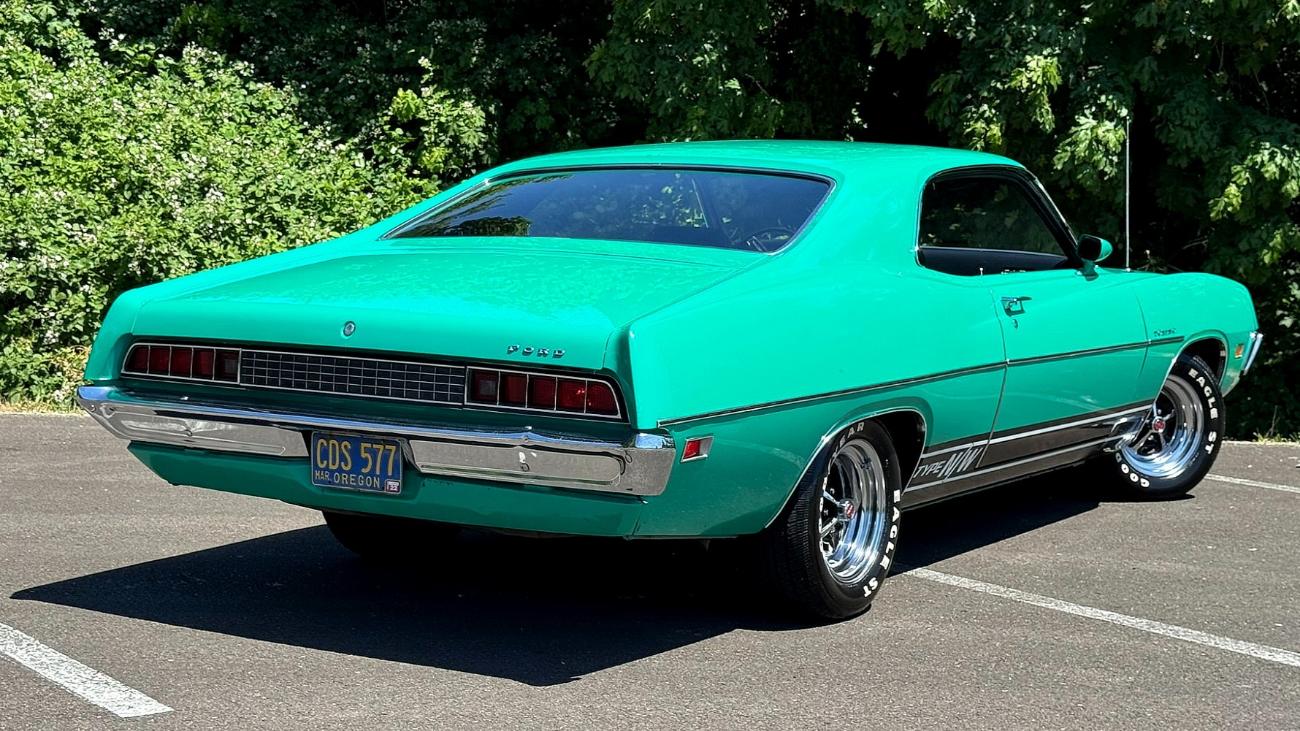
Though this car’s color is called Washington Green, it’s actually the same as Grabber Green (with Pacific Blue and Oregon Orange corresponding to other Grabber colors). Special to the Type N/W were the black-out hood, hood pins, longitudinal protective insert, dual colored racing mirrors, lower-body paint and stripes, and Wide Oval tires with argent styled steel wheels. Currently, this vehicle sports 15-inch Magnum 500s wrapped in 235/60 Goodyear Eagle STs.
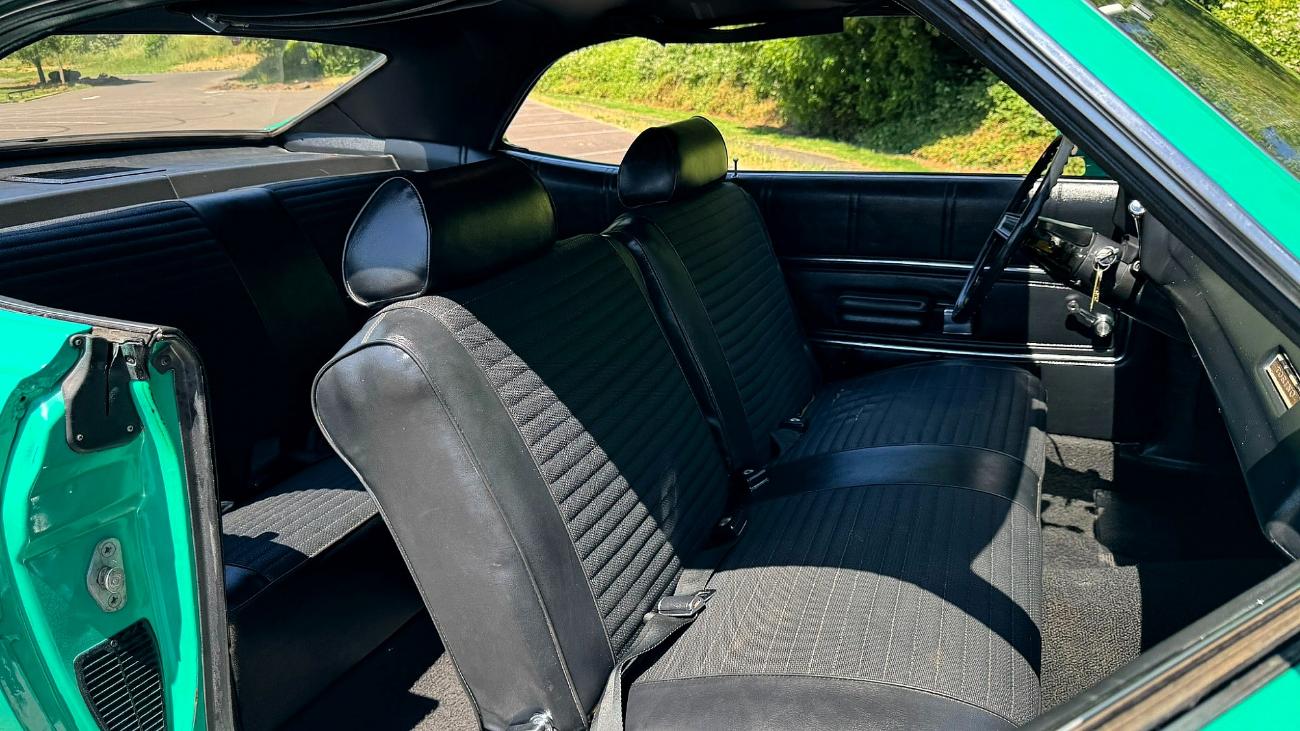
The cabin features a black vinyl interior, with the front seat being your typical bench for the era, but it breathes because the inserts are knitted. Other features include column-shifted automatic, power steering, factory AM radio, and left-hand remote mirror control.
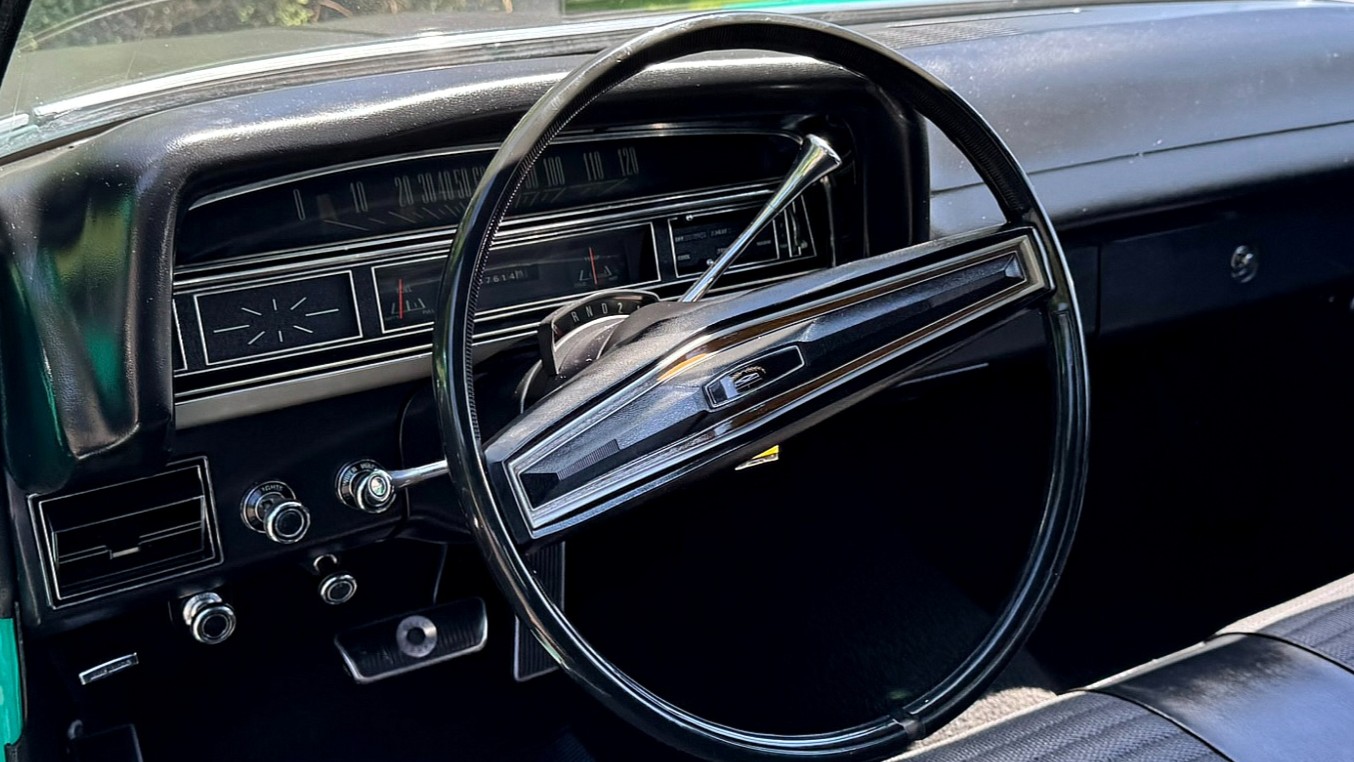
Instrumentation includes a 120-mph speedometer and gauges for the temperature and fuel. The odometer shows 87,614, though the title reads mileage-exempt.
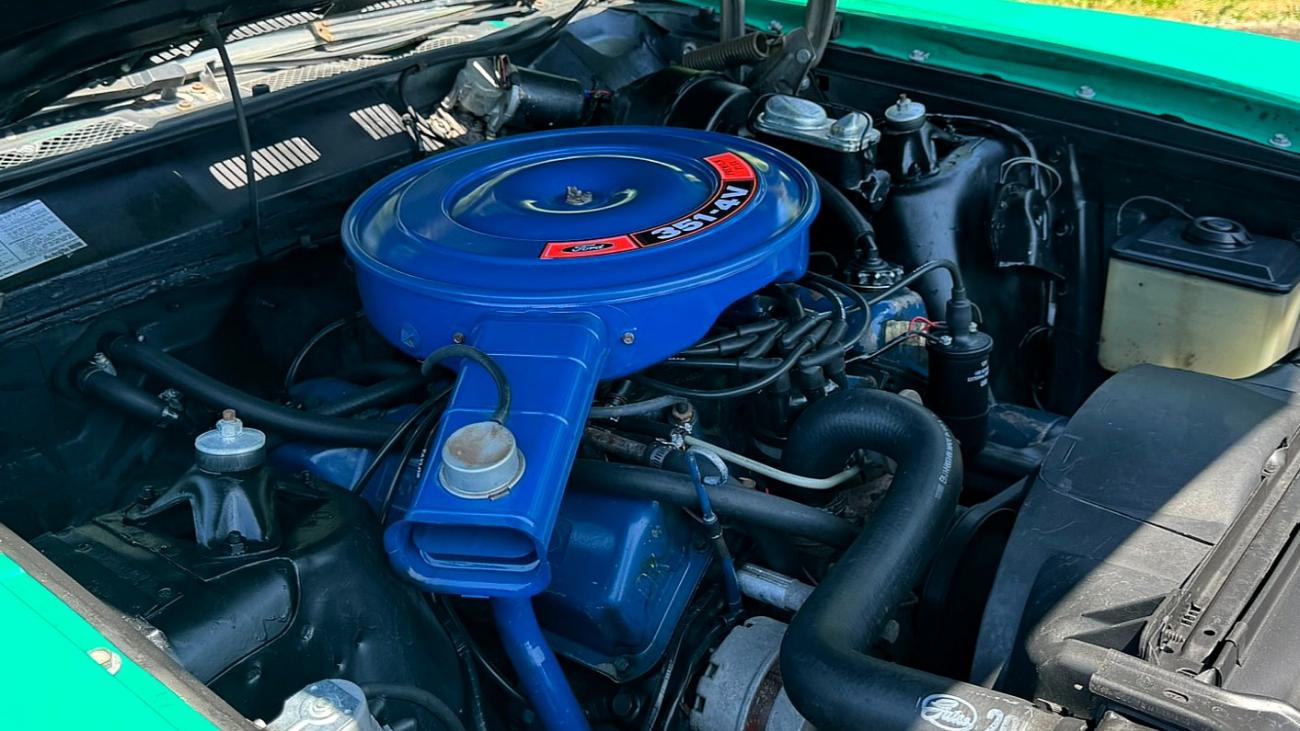
The 300-horsepower 351-4V was installed in 1,727 Torino two-door hardtops in 1970, of which 243 were Type N/W models. This 351 was the first step for those more inclined to performance, so you can expect brisk acceleration. The engine is backed by a three-speed FMX Select-Shift automatic transmission.
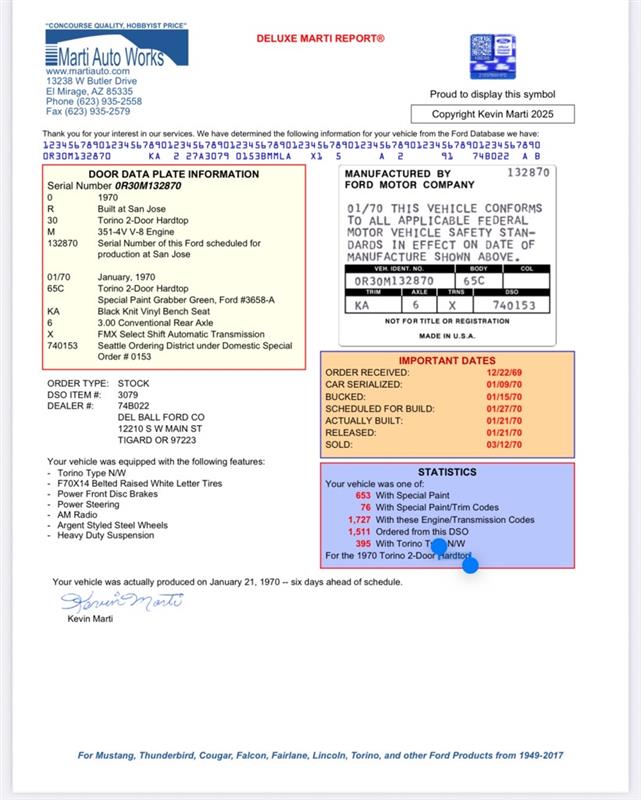
The undercarriage features power front disc brakes and a dual exhaust system. The rear end carries 3.00 gears without limited-slip.
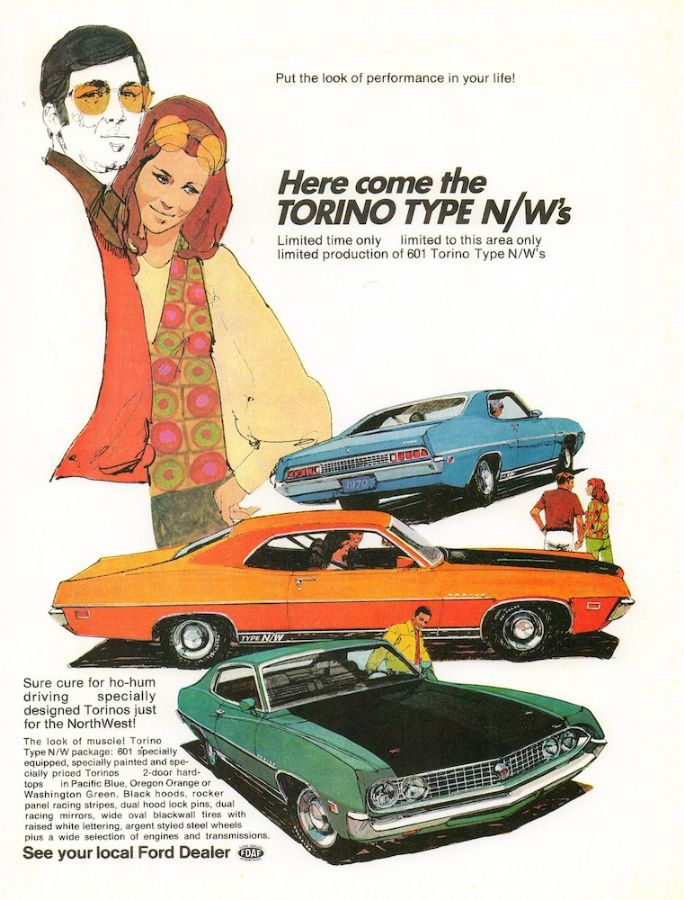
This is a very special Torino, yet time is tight—this auction on AutoHunter ends on July 8, 2025, at 12:00 p.m. (PDT). It would be a shame to miss bidding on such a special regional special! Sure, there are plenty of Torinos to be had, but they wouldn’t be a 1970 Torino Type N/W like this.
Visit the AutoHunter listing for more information and a photo gallery
The unfortunate truth is that most collector vehicle owners in the U.S. are unaware of the precarious situation they are in, facing perils that could cost them dearly up the road. On the one hand many are paying significantly more than they should be for auto insurance, while an even larger group is completely unaware that their current insurance does not include all the necessary coverages needed for classic and collector vehicles. Studies have shown that most collector vehicle owners in the U.S. fall into BOTH categories, overpaying for insurance while also facing significant coverage gaps. This harsh reality won’t reveal itself until the worst possible situation arises, when they get into an accident and need file a claim.
Collector Vehicle Owners Are Being Overcharged… For The Wrong Coverage
There are a few situations in play here. For starters, of the 40 million+ collector vehicles in the United States, the vast majority are insured by standard auto insurance programs. What these owners don’t realize is that these programs were not designed for classic and collector vehicles; they were designed for daily drivers. Standard auto insurance rates are calculated based on all the risks that come with typical daily driver usage, meaning more time on the road doing things like commutes and running errands in all types of weather and traffic conditions. These inflated standard insurance rates do not account for the fact that collector vehicle owners are statistically less likely to get into an accident or file a claim and typically drive their vintage vehicles fewer than 5,000 miles annually. For them, all rides share the same risk profile as a daily driver and their inflated insurance rates reflect that.
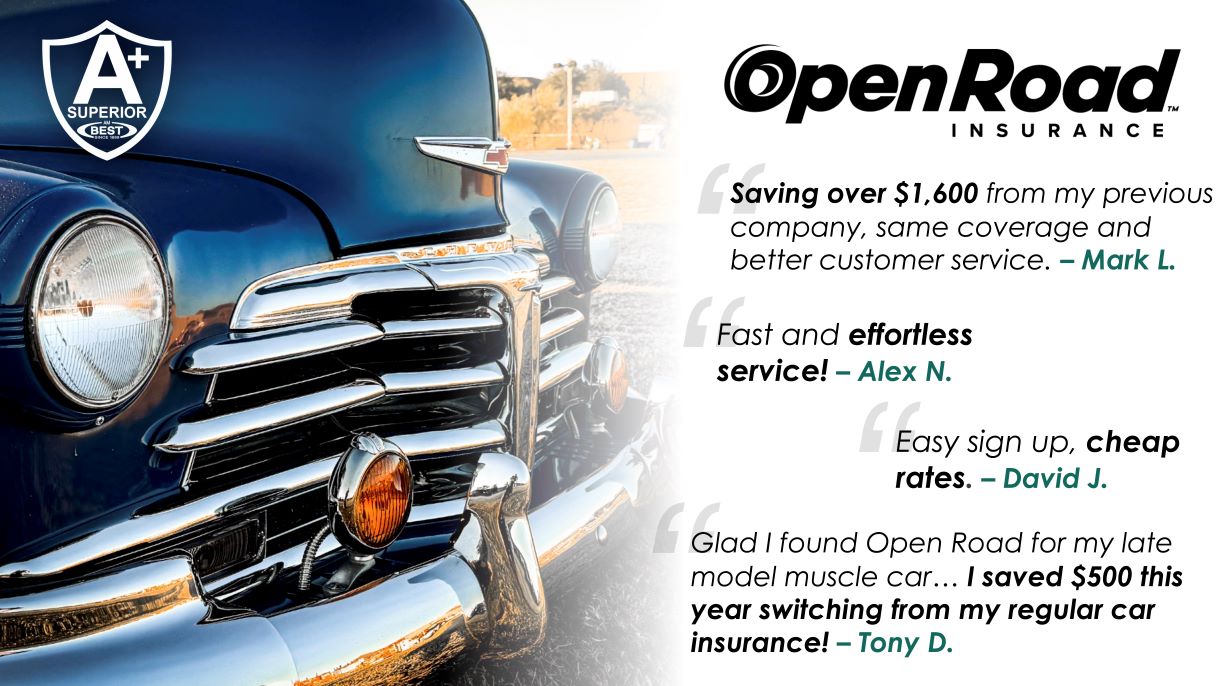
The other scenario at play here has an even broader footprint. If you think your auto insurance rates have skyrocketed in recent years, you’d be right. The Consumer Price Index (CPI) saw the cost of auto insurance rise 51% over the past 3 years, which is six times faster than inflation overall. What caused auto insurance rates to see the biggest price jump in decades? In recent years many of the largest standard insurance companies have been trying to recoup their losses from spikes in reckless behavior seen on US roads. Beginning in 2020, there were more frequent accidents, faster-than-normal speeding drivers and drunk driving surged. This all led to a spike in crash severity, all of which led to more catastrophic vehicle and injury claims on auto insurers. Moreover, materials, parts, and labor shortages during that same time frame caused repair costs for claims to climb like never before. Both factors combined have caused auto insurance rates to soar with little relief in sight. In effect, auto collectors and good drivers have been quietly subsidizing the catastrophic losses felt by insurance companies.
Not only are auto collectors likely paying more than they should be given their reduced risk profile, but the standard auto insurance coverage they do buy is often radically insufficient. This unfortunate truth will only be discovered when they need to make a claim. Even for minor repairs, standard auto insurance programs do not guarantee that they will cover original parts or that their approved body shop network has the expertise necessary to repair these types of vehicles. These coverage gaps and claims handling practices can put the authenticity and value of their vehicle at risk.
Great News For Collectible Vehicle Owners
In all this turmoil there does seem to be some good news for classic car and truck owners, and word is quickly spreading. Recently the auto enthusiast community has been buzzing about a program being offered by the Dallas-based collector vehicle insurer OpenRoad. Customer testimonials from owners previously covered by standard auto insurers, as well as many previously insured by classic car insurance providers, continue to roll in highlighting significant savings, better coverage, and superior customer service.
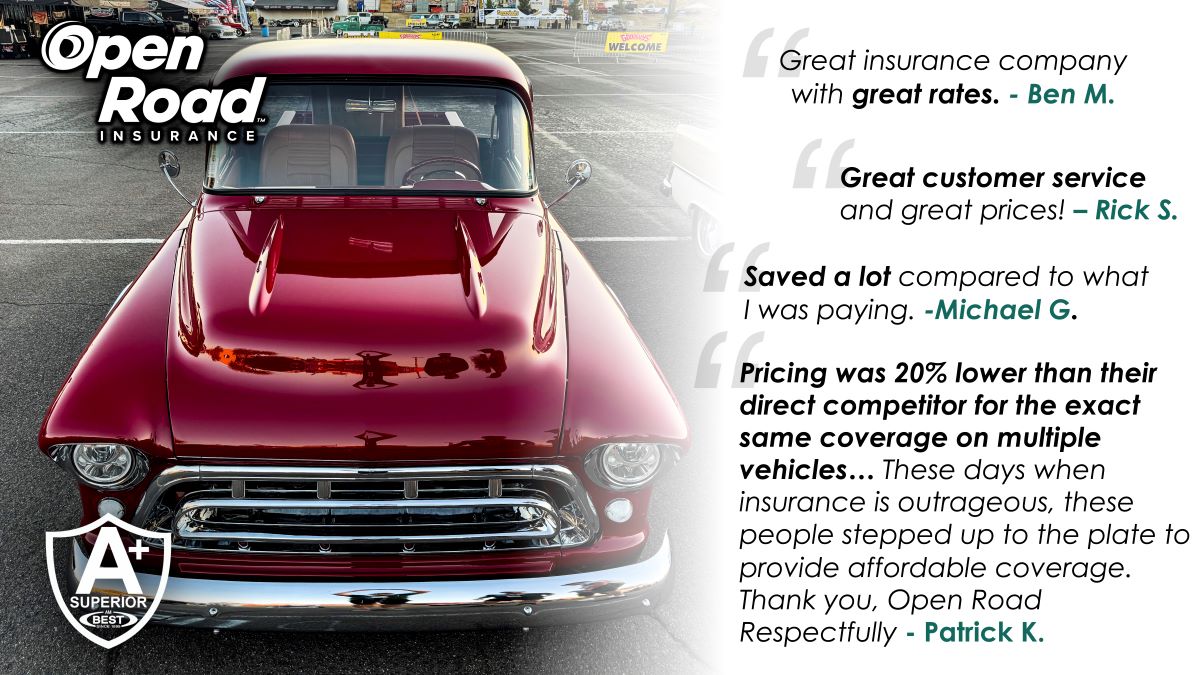
OpenRoad has built a truly unique collector vehicle insurance program that all starts with pricing. Not only do they provide significant savings for drivers with great driving records, but they also account for the reduced accident frequency associated with collector vehicles. Both often results in far lower insurance rates overall. But OpenRoad goes further on reduced pricing, offering additional discounts to car club members as well as any customer who transfers their coverage from another classic car insurer.
Setting a New Bar For Classic & Collector Vehicle Insurance
OpenRoad exceeds what many other programs out there can offer. In addition to getting all the coverage you’d expect with any auto insurance policy— think comprehensive, collision, uninsured motorist, and the like — every OpenRoad policy comes with several protections tailored to car collectors. Their agreed value policy guarantees that the insurance payout you’ll receive in the event of a total loss equals the actual worth of your classic car, rather than a depreciated value that most insurance programs use. This guarantees that you’re covered for the true value of your ride, considering the time, effort, and investments you put into your vehicle as well as its condition and rarity.
OpenRoad is also setting a new bar when it comes to coverage for repairs. Under their program you know that if you need to file a claim the repairs will be done right. Not only will repairs be performed with OEM parts specifically tailored to your vehicle, but you’ll also get to choose a repair shop you know and trust, one that specializes in collector vehicles and classic car restorations. This is another differentiator from standard auto insurance programs that often do not guarantee coverage for OEM parts and rarely let you pick a shop outside of their approved body shop network.
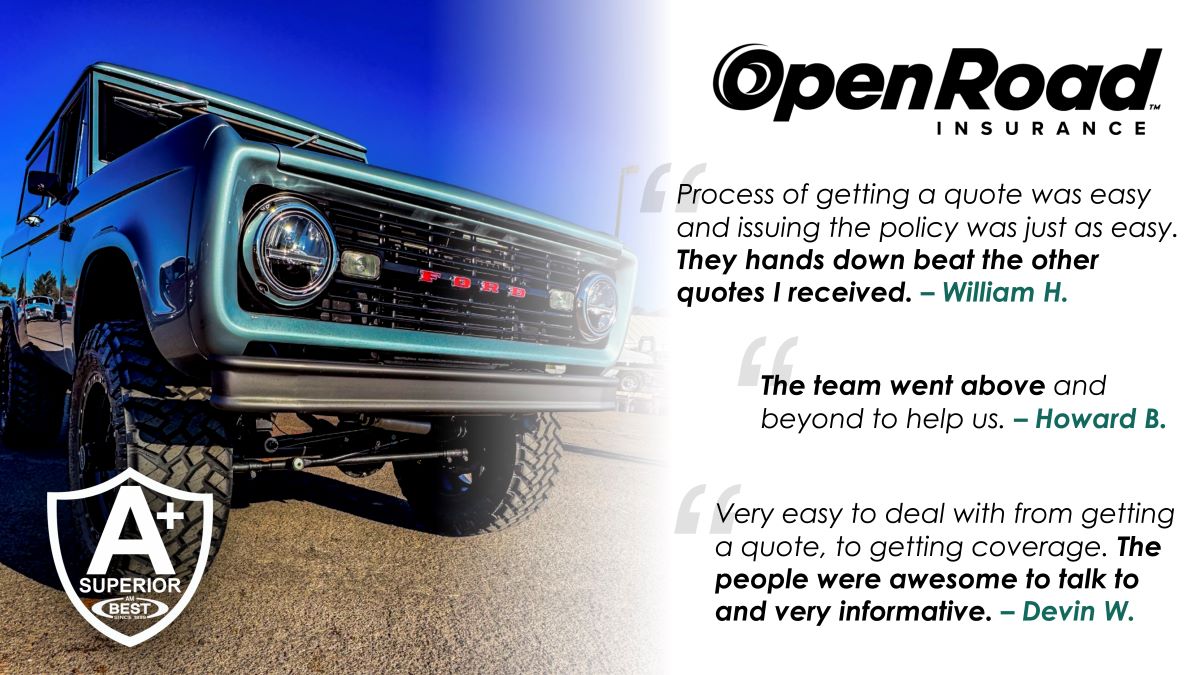
OpenRoad also includes a generous emergency roadside cost reimbursement program at no additional cost as well as coverage for the relocation and temporary storage of your ride in the event of major disasters such as hurricanes and wildfires.
Delivering Superior Customer Service & Specialized Coverage
With so many auto enthusiasts making the switch to OpenRoad, it seems that they have found everything that they have been looking for in a classic auto insurance provider. Just check out these recent customer reviews:
- “Almost half the price (of) your competitors for equal coverage.”
- “Better coverage for less cost than other classic car insurance companies.”
- “They made it easy for me to switch from my old insurance policy to new one and at less than half the price!”
- “Not only did they match our previous collector car insurance, they beat it even after adding another vehicle to the policy! They are rockstars! Would recommend to everyone!
- “To my total surprise I got more coverage for a fraction of what I have been paying.”
Beyond the significant cost relief, many customers also point to the excellent customer service they received with reviews that include statements such as, “The team went above and beyond to help us,” and, “Overall, the best experience I’ve had setting up insurance.” That’s some high praise for an auto insurance company.
Rapidly Expanding Across the U.S.
To keep up with the massive market demand that they’ve seen, OpenRoad has been rapidly rolling out its insurance program across the U.S., quickly growing coverage availability to 24 states. Don’t reside in one of their currently live states? Don’t worry, the brand plans to add coverage across several more states by the summer of 2025. You can also sign up for their launch newsletter and get notified as soon as coverage is available for your area.
Get your quote today and see how much you could save in about 5 minutes.
Movie fans and car fans found a lot of common ground at a recent Barrett-Jackson collector-car auction in Scottsdale, Arizona. Specifically, the Stewart A. Berkowitz collection brought in a high volume of noteworthy vehicles from on-screen – like the Flintstones car, a DeLorean, a “Herbie” Volkswagen Beetle, and even a Batmobile. Imagine being able to drive down the street feeling like a superhero… or being able to drive around a park full of dinosaurs.
The Ford Explorer and the movie “Jurassic Park” were both memorable home runs in pop culture in the 1990s. “Jurassic Park” hit the theaters on June 11, 1993 and went on to gross $914 million during its initial theatrical run alone. In fact, until “Titanic” came along four years later in 1997, it was the highest-grossing film of all time. Similarly, the first-generation Explorer (produced from 1991 through 1994) it played a huge influence on the boom of sport-utility vehicles. Ford sold over 300,000 units per year, and the Explorer was (and still is, today) an undisputed success.
It was my pleasure to kick the Goodyear Wrangler white-letter tires of a unique re-creation of one of the iconic tour vehicles from the original “Jurassic Park” movie. Themed in appropriate red, green and yellow via a custom wrap, it started life as a stock 1993 Explorer XLT four-wheel drive four-door. Based on what we know about the build, the vehicle was originally white before receiving its custom treatment. The Explorer also received yellow-finished 15-inch wheels, a front brush guard, prop fog lamps, and yellow bumpers.
One thing that did not get modified was the engine: power still came from the factory-installed Cologne 4.0-liter V6 that was rated at 160 horsepower and 220 lb-ft of torque. A four-speed automatic transmission and a manual-shifting dual-range transfer case sent power to all four wheels. The interior was appointed with blue cloth upholstery, power windows, a center console, and – in proper 1990s fashion – an AM/FM radio with a cassette player.
This eye-catching Ford Explorer blurred the lines behind movie magic and driveway reality. We are excited to see what other kinds of “themed” vehicles pop up next at the upcoming Barrett-Jackson auction which will take place October 15-18 at WestWorld of Scottsdale. Join us for the fun, because the variety of vehicles on display (and up for grabs) will surprise you.
Just watch out for any T. rex sightings!
Stay tuned to the ClassicCars TV YouTube Channel for more feature stories from Barrett-Jackson.
